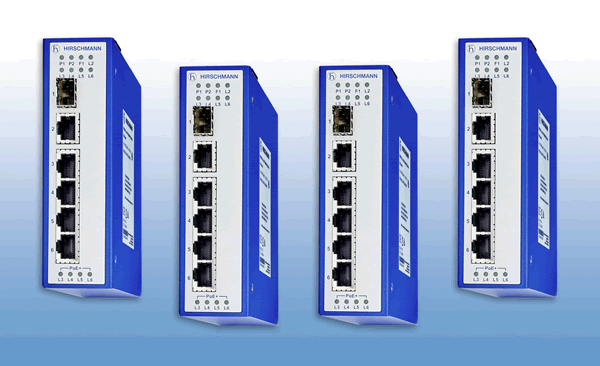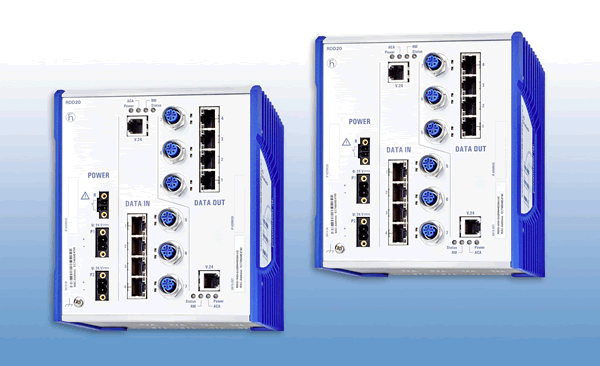Industrial Wireless Enhances the Rail Experience
As rail operators encourage more people to consider public transportation, new connectivity technology is enhancing the customer experience.

From personal internet access via smartphones to instant onboard entertainment options to up-to-date travel information, passenger demands on public transportation continue to increase. These offerings are no longer luxuries; they’re necessities to an industry that is looking to capture riders from the individual car commuter pool. An analysis of passengers who traveled on the Capitol Corridor route along the US West Coast in 2012 showed that offering free wireless internet access leads to an approximately 3% increase in passengers. To reliably deliver these wireless technologies, as well as to manage and control today’s modern transportation systems, the network infrastructure running behind the scenes needs to be sophisticated.

For several years now, industrial automation applications have been abandoning conventional fieldbus technology in favor of Industrial Ethernet. While traditional fieldbus technology is relatively simple and extremely reliable, Ethernet offers many added benefits, including additional flexibility, ease of use, and real-time communication.
Previously, many transportation network devices and protocols were incompatible, and systems could not be interconnected to achieve the single integrated network that is now needed. With Industrial Ethernet’s ability to network individual subscribers and use standardized global technology (IEEE 802.3), the entire passenger train has now become one integrated Industrial Ethernet-based network.
Successful Integration of Wireless on Trains
In order to meet customer expectations, enable flexible train configurations, and deliver on enhanced productivity demands, rail designers must leverage industrial wireless technology. The use of wireless Ethernet in trains also increases passenger safety and convenience and enhances productivity and flexibility for rail operators.

The Hirschmann SPIDER series of industrial Ethernet switches reliably transmits large amounts of data across any distance. (Belden)
To successfully integrate industrial wireless products into a railway setting, rail designers should carefully consider the system’s environment and demands regarding reliability, usability, safety, security, standards compliance, and future developments.
Harsh environment. The railway industry has its own specific challenges when it comes to environmental conditions. Trains need durable products to withstand a great deal of wear from factors including temperature fluctuations and moisture from rain, snow, and sleet. Rail manufacturers need robust products designed and built specifically for harsh railway environments. For example, wireless access points that can be mounted on DIN rails or installed within the train roof space or other networking products that must operate in temperatures from -40°C to +70°C (-40°F to +158°F) and withstand electrostatic discharge up to 25kV. In addition, technology that reliably eliminates competing radio frequencies, which guarantees stable wireless connections at all times, is needed to combat any interference.
Redundancy measures. Reliability is key in the transportation industry, and trains need fail-safe measures in place to keep their industrial network up and running. Downtime and delays cost money and negatively impact passenger satisfaction. Wireless products with built-in parallel redundancy protocol (PRP) can help dramatically improve the reliability and quality of wireless connections and allow the loss- and latency-sensitive applications typically found within the railway industry to be successfully operated with industrial wireless technology.
Central management. Wireless networking capabilities also enable the remote management and monitoring of the network from a central location, including traffic control and passenger information systems. Network management software, for example, can recognize the topology of a train’s onboard network and use the information to assign numbers to rail cars and even specific seats. A snapshot of occupancy within individual cars is also possible.
Safety and security measures. Industrial wireless products can play a major role in enhancing the safety of passengers and the security of the train’s network. For instance, IP-based cameras provide train station and rail car surveillance, while wireless access points enable secure wireless transmission of the video information.

The Hirschmann Rail Data Diode enables constant Ethernet network monitoring and eliminates intruders’ ability to access the control network. (Belden)
Standards and certifications. The railway industry has specific industrial networking standards to meet, depending on geographic location. When incorporating wireless technology, it’s also critical to select networking and connectivity products that support the IEEE 802.11 transmission standard for WLANs and have the relevant country certifications for the global railway industry.
Future trends and expansion. An Industrial Ethernet network is inherently flexible and easily expandable, which makes it ideal for adapting and accommodating future trends in the transportation industry. Ethernet networking permits increasing data speeds and enables flexible programming for modern, high-speed rail technology. Features like video coverage of platforms for train drivers or front-facing cameras to improve safety are also enabled through wireless Ethernet technology.
Industrial networks in the railway industry should balance the needs of passengers and rail operators, ensuring high levels of reliability, safety, and comfort. Due to the challenging rail environment, these networks require extremely resilient products designed to meet strict standards for redundancy, availability, and data security. The integration of wireless networking will bring many benefits to the industry, but will also introduce new challenges, like maintaining optimal levels of reliability and performance.
Networking technology and customer expectations continue to evolve. As rail cars become progressively more sophisticated and data rates continue to increase to support new applications, advancements to industry standards will also continue to evolve. As such, networks designed for future upgrades and expansion are essential to meeting current needs while also planning ahead for future requirements and trends.
By Richard Weatherburn, Strategic Marketing Manager, Transportation, Belden. Learn more about Belden’s industrial wireless technology for rail systems.
Interested in a specific market? Click a market below for current articles and news.
Automotive, Consumer, Industrial, Medical, Mil/Aero, Datacom/Telecom, and Transportation












